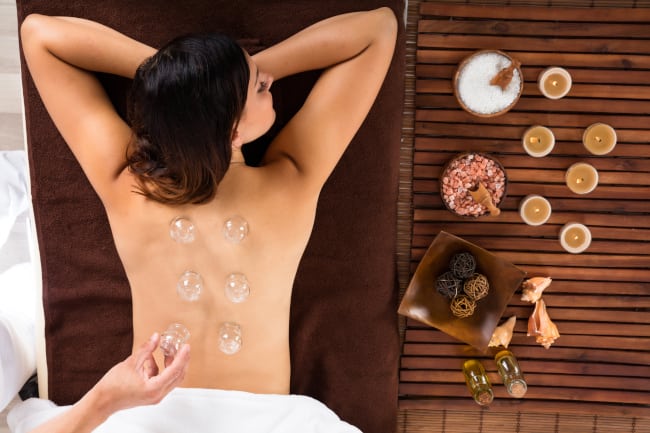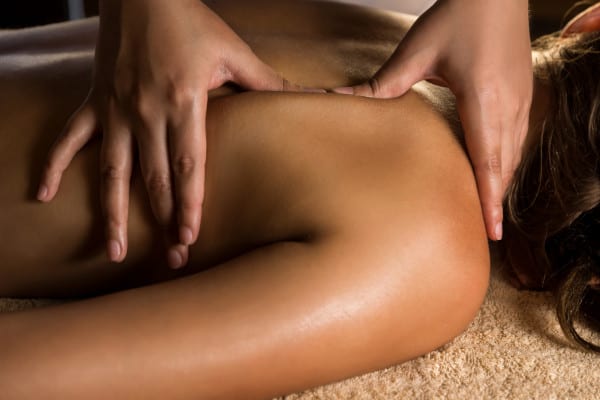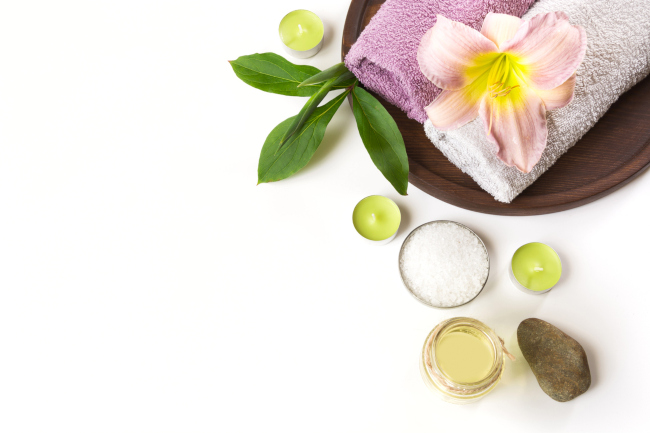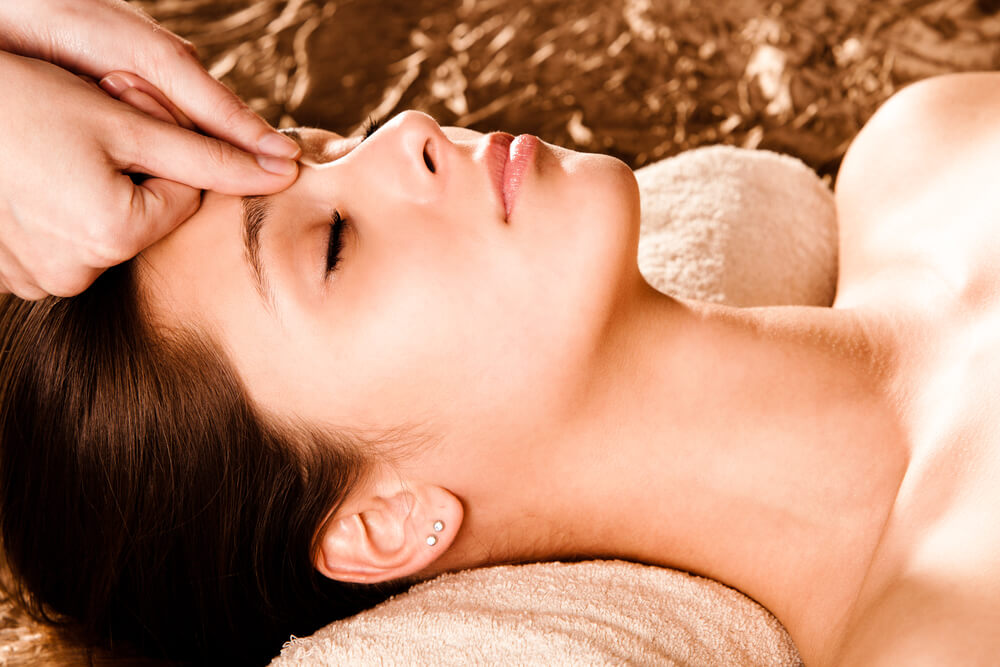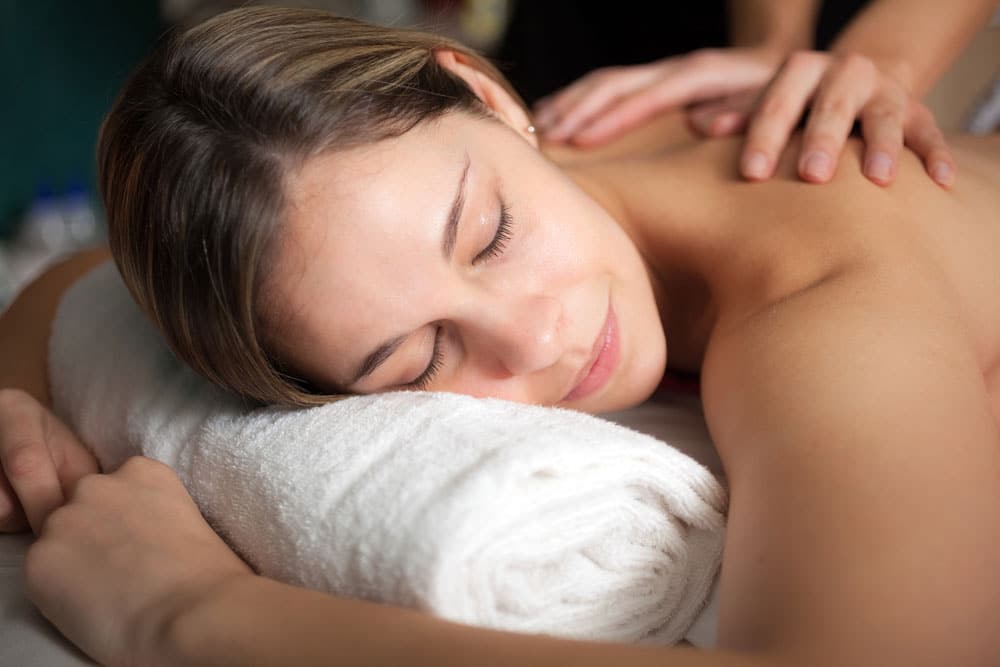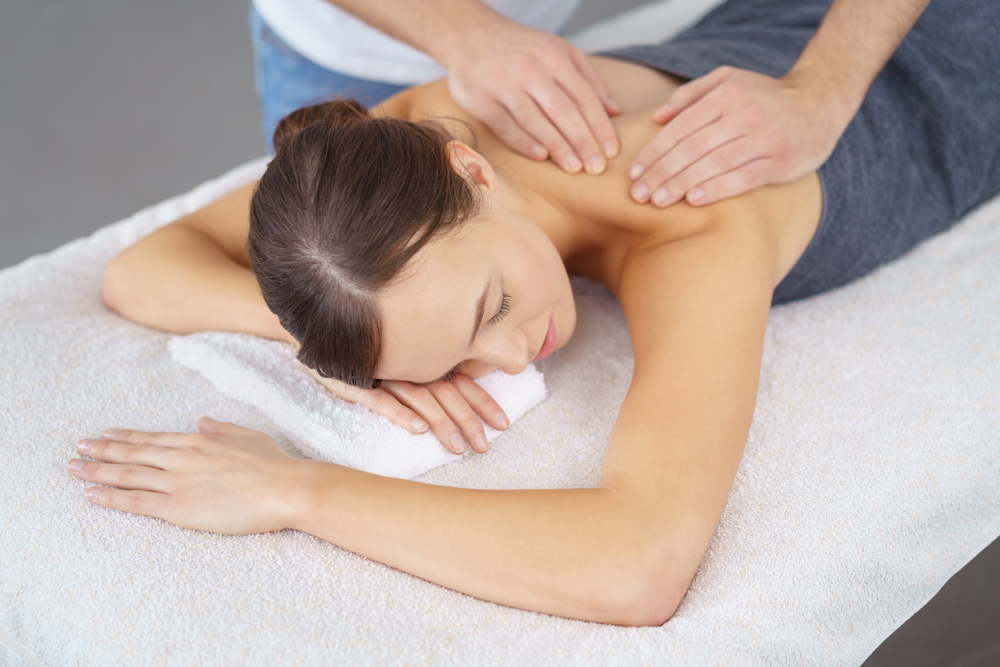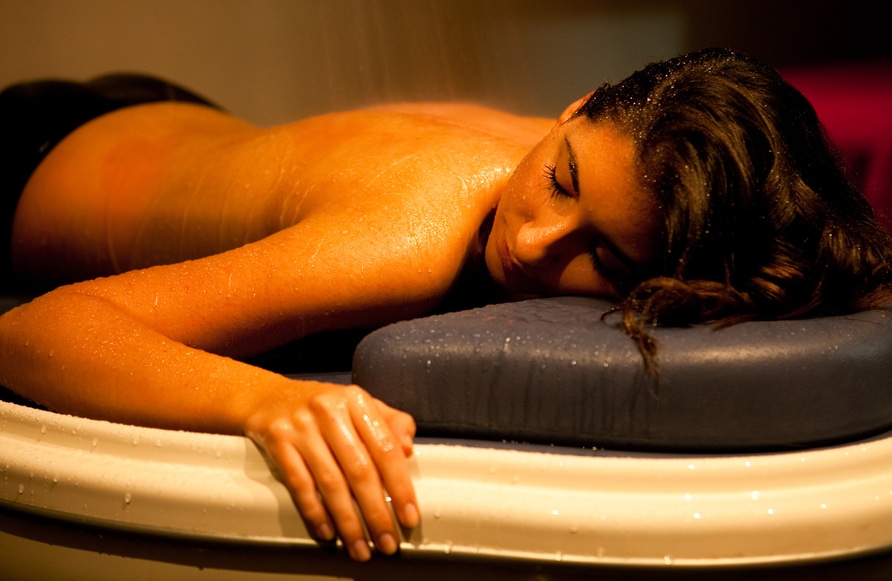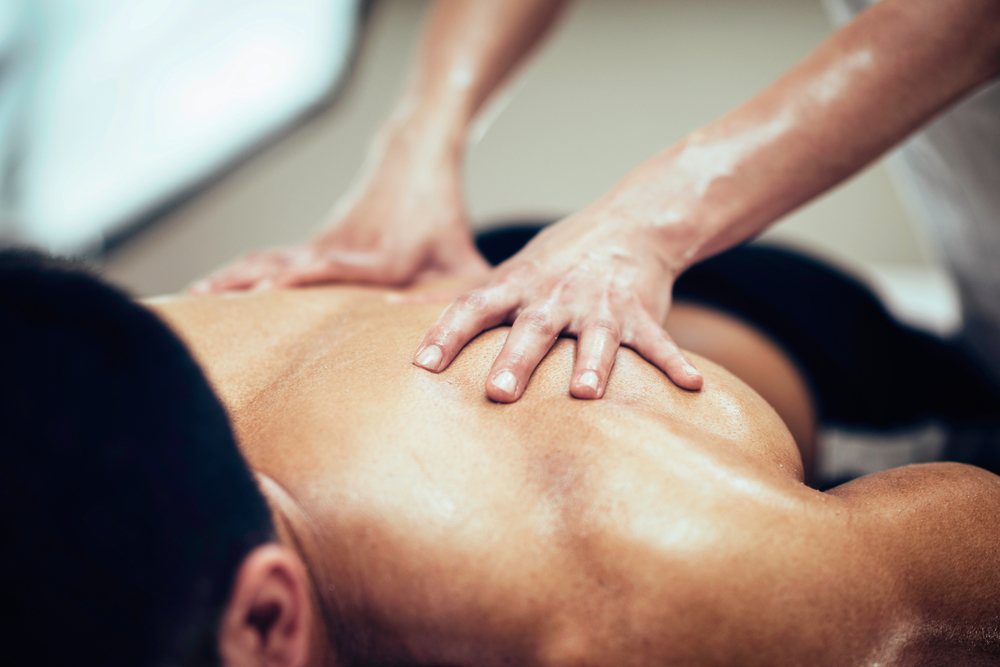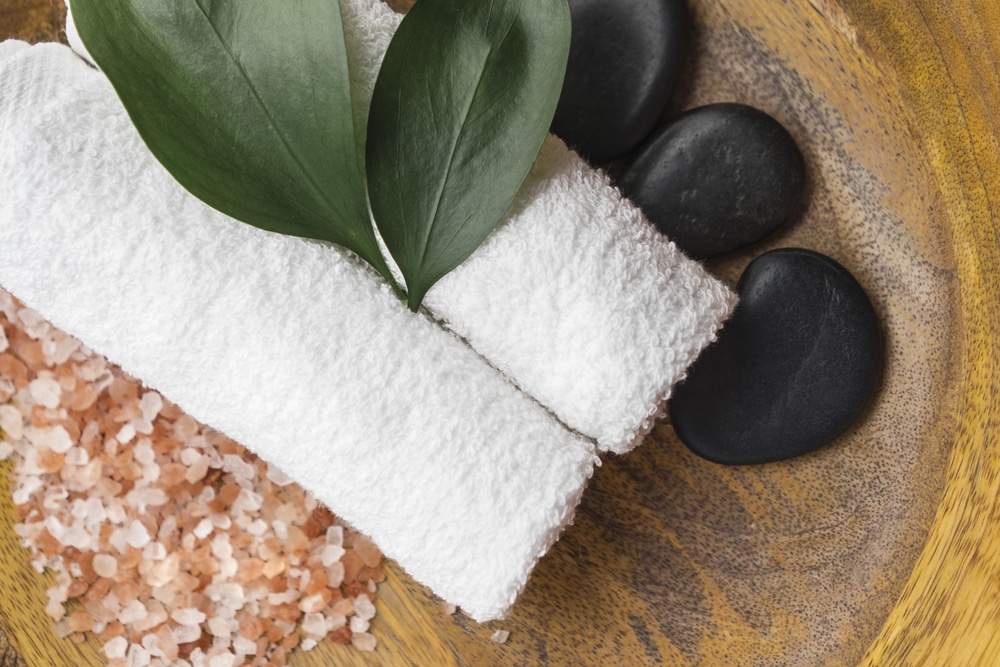There are many different types of alternative medicine treatments that have roots going back hundreds and thousands of years. Many of these methods stem from ancient Chinese treatments. One such treatment method is Cupping Therapy. Going back to Taoism in 281 AD, this technique utilizes specially designed cups that rely on the force of suction and strategic placement to address certain ailments.
As a form of massage therapy, cupping therapy is performed in a spa setting. The professional warms special cups, often made of glass, and the cups are placed on the skin. Warming the cups before placement creates a suction that draws the skin into the cup a bit. The change in pressure causes a reaction from blood vessels and the skin turns red in response.
Cupping can be dynamic or static. In dynamic cupping, also called gliding cupping, the body is oiled and the cups are slid around the body. With static cupping, the cups are left in one place for several minutes.
Increased Circulation
Due to the suction used in cupping, blood flow changes occur. The blood vessels respond to the pressure caused by the suction and will increase at the area where the cups are located. If a client suffers from low circulation in specific areas of the body, the cups can be placed to help encourage increased circulation to that specific area. Increased blood flow may also help relieve tense muscles and encourage cellular repair.
Detoxification
One of the biggest issues people have is an excessive amount of toxins in the body. Toxins come from the food we eat and our daily environment. The body is like a sponge for toxins, yet it can be difficult to get rid of them. Cupping therapy can assist the body’s natural detoxification process by helping to trigger the lymphatic system.
In this instance, the skin is often oiled first. The cups are warmed and placed. Instead of remaining on one spot for several minutes, the cups are moved and slid around the body toward the lymphatic system components. In fact, using cupping for detoxification can force toxins from their resting places and through lymphatic vessels to be further removed from the body. Some toxins may also escape through the pores of the skin at the cup locations. For example, a smoker can have a cupping session that focuses on the lungs. In this case, the cups are placed above the lungs. It is possible that the cupping session will force tar out of the body through the pores to be easily wiped away. There is the potential for this to occur with several different types of toxins stuck in the body.
Reducing Anxiety and Depression
Think of cupping like a vigorous massage. The massage itself can feel great, but the level of relaxation achieved makes the massage even better. Cupping has a very similar effect, particularly if the cups are being guided around the skin. After a cupping session, clients may feel less anxious and more mentally sound. It is also possible, through the use of acupressure locations, to trigger the release of specific hormones known to produce a calming effect.
In a similar manner, clients suffering from depression may also experience less symptoms. Cupping, when used for alleviating depression symptoms, can help the body balance out hormones by focusing on areas of the body that produce hormones related to depression symptoms. As these areas are targeted, hormone production can be triggered to create a sense of well-being. When used for depression, it may also help stop overproduction of those hormones that are causing clients to feel depressed.
Chronic Pain
One of the most common reasons for cupping is to alleviate chronic pain. People with chronic conditions such as back pain and muscle aches can benefit from cupping. The combination of blood flow stimulation and utilizing acupressure points can help encourage increased oxygen and blood cells to the site of pain, as well as reducing inflammation and nerve responses that trigger pain.
Side Effects
The potential side effects from cupping are minimal. The most common effects include light dizziness, sweating, and nausea. It is also likely that the skin will have red circular marks where the cups were placed due to the suction. It can take a few days to two weeks for these red marks to disappear. Additional potential side effects may include bruising and sensitivity at the cup placement sites. Follow any after care instructions our professionals provide.
The time that results occur varies from one person to another and depends on the ailment and severity. Some clients experience immediate results, either during or directly following a cupping session. For others, it can take a day or two to feel a difference. There are also come clients that may not experience results until a few sessions have occurred.
Candidates for Cupping
Not everyone is a good candidate for cupping. At the spa, a short consultation will occur to determine if cupping is recommended. Generally, people with cancer are not good candidates because cupping can encourage cancer cells to grow. Additionally, people on specific medications such as blood thinners and those with certain blood-related conditions such as clotting issues are not ideal candidates for cupping.
After Care
We recommend for our clients to eat after a cupping session. Drink plenty of water to avoid dehydration. We also recommend protecting cup marks against direct sun exposure and avoiding swimming until they have gone away. Clients may need to allow at least 24 hours following a cupping session before engaging in heavy workout routines.
Cupping therapy is growing in popularity as a natural method for alleviating many different ailments. In addition to pain and anxiety relief, cupping can also be used to increase range of motion, reduce muscle spasms, and aid in digestive issues. Some people with breathing issues, such as asthma, may also benefit from cupping sessions. If you are interested in cupping therapy, book a massage with Qi Massage & Natural Healing Spa today.



